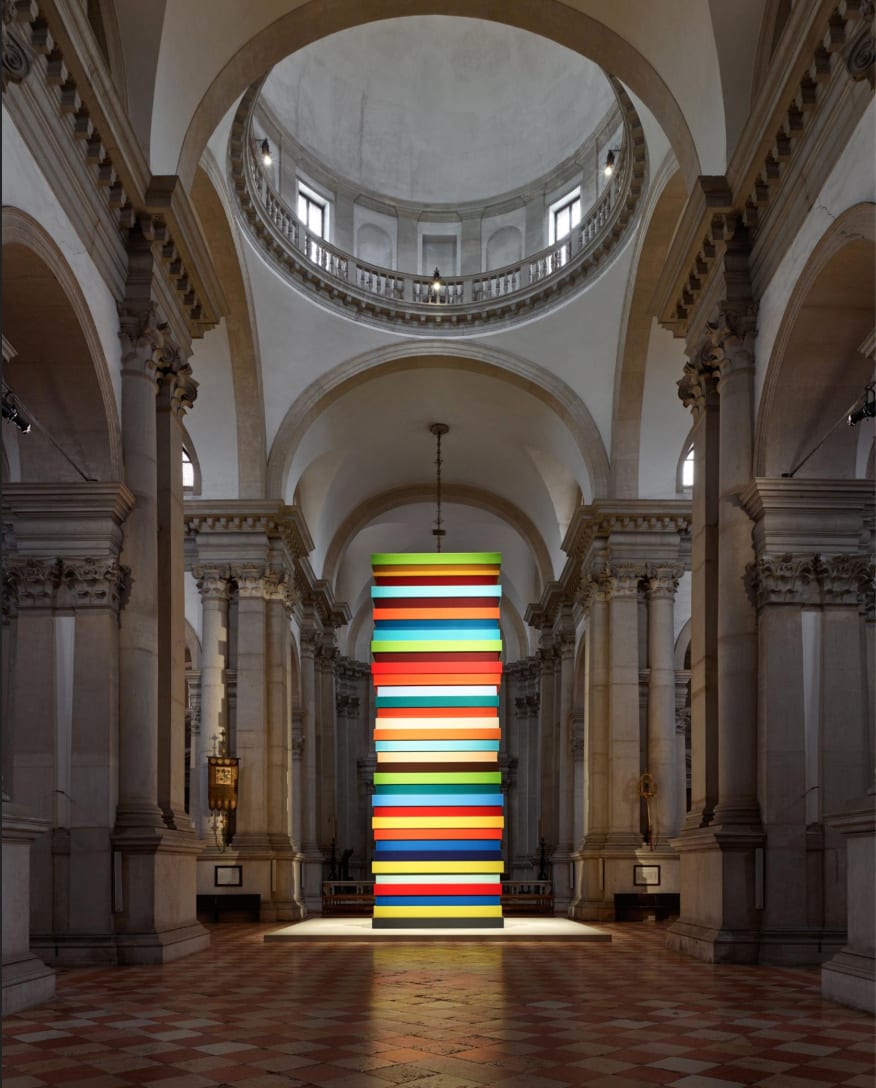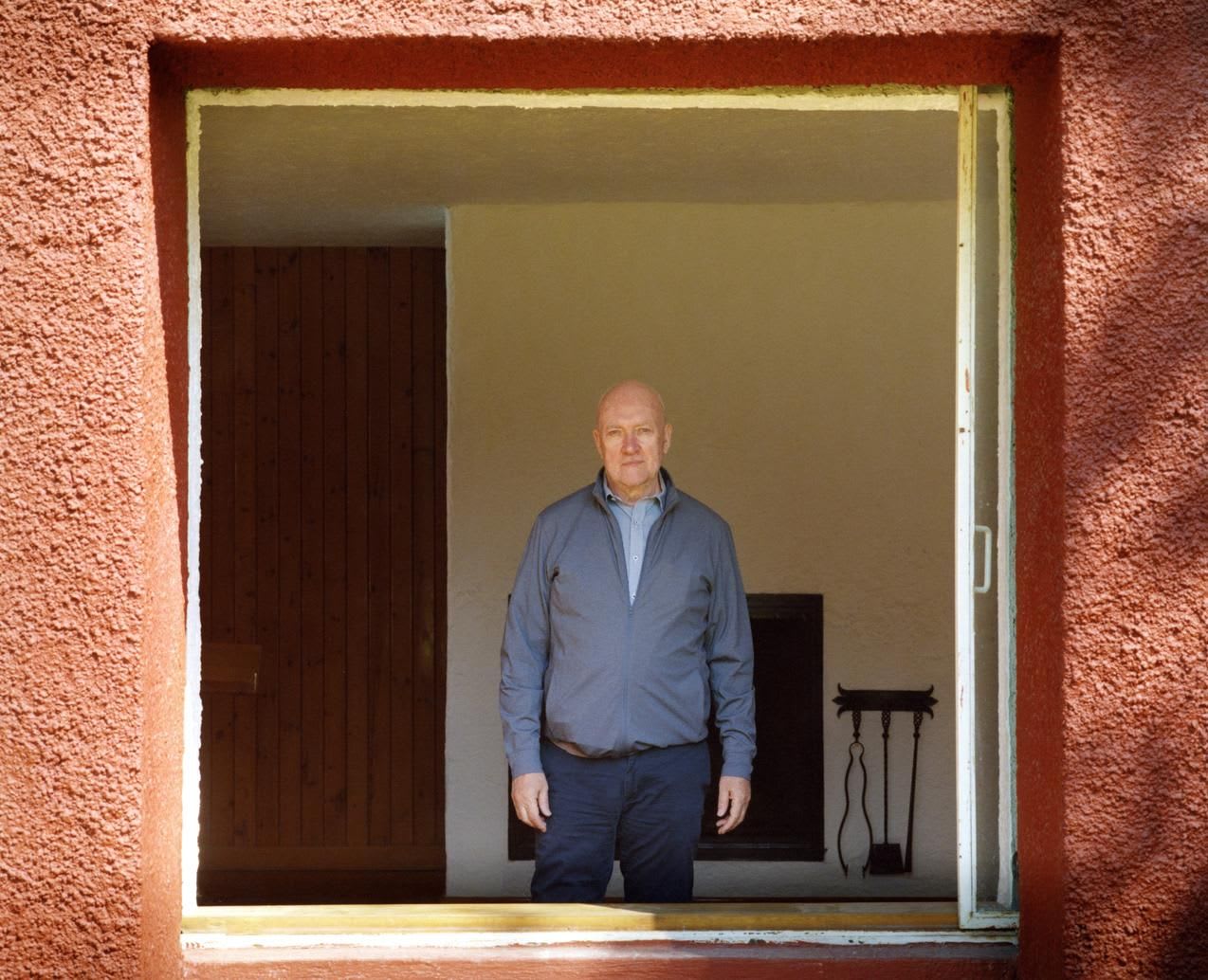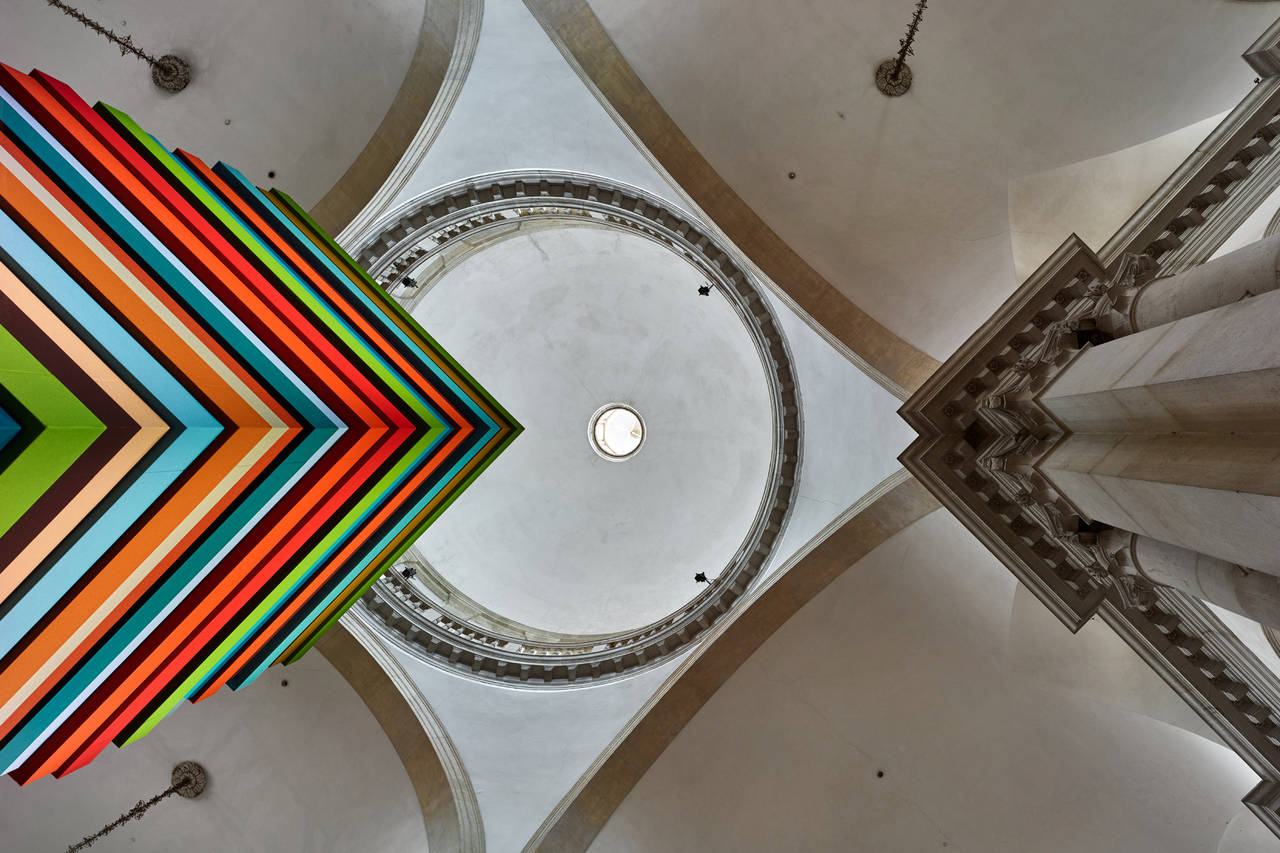
Artist Sean Scully Finds His Muse in Venice

At his new exhibit alongside the Venice Biennale, Sean Scully sculpts a vivid tower, creates an illuminated manuscript and is inspired by his 10-year-old son
“I’ve found my muse,” Sean Scully says, while strolling through an exhibition of his art in Venice.
The solo show, titled “Human,” opened May 8, just before this year’s Venice Biennale, an art extravaganza that sprawls across the city between May 11 and Nov. 24.
Mr. Scully’s exhibit, which isn’t formally part of the Biennale, contains more than 40 recent works. Several sprang from an unusual collaboration between the New York-based artist and a community of Benedictine monks living on San Giorgio, an island in the Venetian lagoon. The show is in the island’s basilica, San Giorgio Maggiore.
Many would say the 73-year-old Mr. Scully found his muse half a century ago when he embraced abstraction. And his trademark bands of color open the show here.
The first of several surprises comes when visitors discover they can walk into the tower from the back. The second comes when they look up. If light is flooding in the windows of Palladio’s dome, the sunbeams cast a four-pointed star on the inner walls of the sculpture.
Mr. Scully’s show is the most recent effort in a campaign to bring artists to work and exhibit on San Giorgio. “He ate with the monks. He lived with the monks,” says Carmelo Grasso, the director of the nonprofit that launched and oversees the project. The venture aims to give new life to the basilica. Though it contains paintings by another late Renaissance master, Tintoretto, and is a short boat ride from St. Mark’s Square, Palladio’s creation is more often admired from afar than visited.
The exhibit contains Mr. Scully’s paintings, sculpture, drawings as well as pages from his sketchbooks, some of which include writing. He spent several weeks with the monks to prepare for “Human.”
When the show closes Oct. 13, Mr. Scully will leave behind for his hosts a candelabra, two stained glass windows and a contemporary version of an illuminated manuscript, decorated with drawings and watercolors. The book is “full of all my abstract nonsense,” the artist jokes. During exhibition hours it rests on a lectern at the front of the choir where the monks gather to chant.
Mr. Scully was unable to part with all the pages he had adorned. And that is where the muse slips back in along with the third—and biggest—surprise: Some of the sketches by this dedicated abstractionist are figurative.
The muse is Mr. Scully’s 10-year-old son, Oisin (pronounced O-sheen). “Because I’m so nuts about my son, I wanted to paint pictures of a child in an eternal place, representing all children,” he says.
The place Mr. Scully found was a beach on the island of Eleuthera in the Bahamas. Watching Oisin play with his mother on the sand inspired three vividly colored oils he calls “Madonna Triptych.” It also gave rise to a tender depiction in pencil and watercolor of his son on the beach, looking down with his face obscured by a large hat.
“I used to be a very intense portraitist, so it was easy for me to make these” says Mr. Scully, gesturing at the figurative sketches on display. “I’m not one of these people who started out with a computer.”
He adds that his foray into figurative work is finite. “I’m not flipping,” he insists. But, later, a doubt creeps in. He speculates that his artistic re-engagement with the physical world may reflect a concern for the environment.
Mr. Scully allows that his creative impulses run ahead of his capacity to make sense of them. “I never know why I’m doing something while I’m doing it,” he says.

‘I never know why I’m doing something while I’m doing it,’ Mr. Scully says of his work.
PHOTO: SEAN SCULLY/FELIX FRIEDMANN

Visitors can see Mr. Scully’s ‘Illuminated Manuscript’ in the part of the church where the monks gather to chant.
PHOTO: SEAN SCULLY/KEWENIG, BERLIN/STEFAN JOSEF MÜLLER

Mr. Scully’s ‘Opulent Ascension,’ left, rises more than 30 feet high beneath the basilica’s dome, designed by Palladio.
PHOTO: SEAN SCULLY/KEWENIG, BERLIN/STEFAN JOSEF MÜLLER